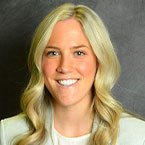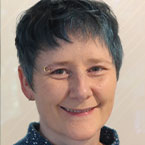By: Brailyn Weber & Sarah Asch, MD, MS, FAAP, FAAD
Heat rash, or miliaria, is a skin condition that happens mostly in babies and young children. It looks like tiny red bumps or tiny blisters. Heat rash is sometimes also called "sweat rash" or "prickly heat."
Here's what parents need to know about heat rash, and how to help prevent it.
What causes heat rash?
Heat rash develops when the openings of sweat glands become blocked. This causes sweat to be trapped underneath the skin.
Heat rash is very common in the first few weeks of life. It often develops in hot and humid conditions, especially if a child is wearing tighter clothing. For example, it tends to occur when a baby or child is wearing many layers of clothes or wrapped in blankets or buckled into a seat and air can't flow as easily around them.
Signs and symptoms of heat rash in children
Patches of skin covered in tiny red bumps or tiny fluid filled blisters.
Affected areas might be the upper chest and back, the neck fold, around the hair line or under the diaper, but most anywhere can be affected.
The rash can be itchy, so your baby might be extra wiggly or fussy.
How to treat heat rash
Cool your child in a cool bath or with cool moist compresses to remove sweat, then dry the skin completely.
Leave the affected body areas open to air without clothing when possible.
Dress your child in thin, loose-fitting cotton clothing.
Pay special attention to cooling and cleansing the skin folds that often get wet with sweat or drool, like the neck, armpits, elbow creases and leg creases.
Use air conditioning or a fan blowing gently on your child to keep them cool.
Do not apply thick greasy ointments to the rash areas since this can also block the sweat glands.
When to call your child's doctor
If the rash appears infected (tender, pus drainage).
If your child has a fever.
If your child is eating less or is less active.
If the rash is not gone after 3 days of at home treatment or is getting worse over 24 hours.
How to prevent heat rash
Dress your child in loose-fitting cotton clothes when it's warm and avoid extra layers or tightly wrapped blankets.
Use fans or air conditioners to keep your child's skin cool and dry on hot days.
Try to avoid keeping your child in very hot places or strapped into a seat for a long time.
More information
About Ms. Weber
 Brailyn Weber is a third-year medical student at the University of North Dakota where she is pursuing a career in pediatric dermatology. Ms. Weber is a member of the Section on Dermatology. Brailyn Weber is a third-year medical student at the University of North Dakota where she is pursuing a career in pediatric dermatology. Ms. Weber is a member of the Section on Dermatology.
|
About Dr. Asch
 Sarah Asch, MS, MD, FAAP, FAAD is a member of the American Academy of Pediatrics (AAP) Section on Dermatology, Education Committee. She is also a member of the AAP Section on Telehealth and the Chair of the Society for Pediatric Dermatology Teledermatology Committee. She is a pediatric dermatologist in a solo teledermatology and mobile pediatric practice aimed at underserved and rural populations in the Upper Midwest. She currently serves as an adjunct faculty at the University of Minnesota. Dr. Asch served as a 2022-23 Walter W. Tunnessen, Jr., MD Visiting Professor providing pediatric dermatology lectures for pediatrics residents. Sarah Asch, MS, MD, FAAP, FAAD is a member of the American Academy of Pediatrics (AAP) Section on Dermatology, Education Committee. She is also a member of the AAP Section on Telehealth and the Chair of the Society for Pediatric Dermatology Teledermatology Committee. She is a pediatric dermatologist in a solo teledermatology and mobile pediatric practice aimed at underserved and rural populations in the Upper Midwest. She currently serves as an adjunct faculty at the University of Minnesota. Dr. Asch served as a 2022-23 Walter W. Tunnessen, Jr., MD Visiting Professor providing pediatric dermatology lectures for pediatrics residents.
Editor's note: Heat rash (miliaria) image courtesy Sarah Stein, MD, FAAD, FAAP.
|